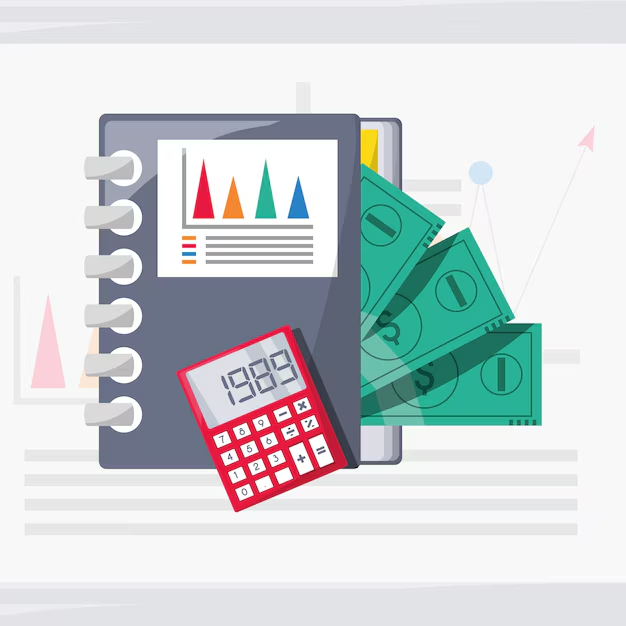Before obtaining a loan, it is important to determine how you will manage the loan amount as well as whether borrowing will benefit in your particular situation or not. This articles explains how to analyze the need for capital, determine the amount of money to borrow, and what advantages a loan can provide. Let’s examine the main steps of Calculate Loan Amount, along with making healthy financial decisions.
Calculate Loan Amount Based on Purpose of Borrowing
- The first step involves understanding as to why funds are needed. Some examples include:
- Establish A New Project or Develop An Existing One
- Dealing with working capital while the payments are still being received from buyers
- Composing invoices to suppliers, paying salaries, rent, and utility payments
- Paying off the current loan
- Using explanations above, now try to figure out how much money you are going to borrow and what conditions are going to work for your needs.

Key Factors to Consider Before You Calculate Loan Amount
Regardless of the reason for incurring the debt, one has to always cover some bases. Make sure you can afford the monthly payment for interest at the beginning. Loans come with absolute responsibilities, meaning they are due at certain times. For instance, if one borrows 1000 Rs, with 10 percent interest each year, they owe 100 Rs at the end of twelve months.
Moreover you may also be asked to provide land, building, or even your inventory as collateral for the loan. Collateral is very common since banks prefer lending money against assets. If it is a loan for working capital, your stock – which can be raw material or finished goods – can be pledged to the bank against the loan.
A steady cash flow is another very important point. If one lacks stable cash flow, repaying the loan might be a challenge, and this will hurt your creditworthiness. Do make certain that the project that you are funding is profitable. An easy way to judge a project is that it is seldom unprofitable, thus making a loss on it is. If a business or project generates sufficient profits, it stands to reason that, funds will be readily available to repay the principal and interest on the loan.
How to Calculate Loan Amount Step-by-Step
An accurate estimate of the loan amount can be determined in a few simple steps. Here’s how to tell:
Determine Total Cost of the Project As an example consider a house costing Rs. 1 Crore to construct. To complete it, you’ll need to put in a downpayment of approximately 20 Lakhs and borrow the rest 80 Lakhs for the bank.
Estimation of property before valuating loan Before giving any loan, the bank will determine a loan amount based on their assessment for the asset that you are buying. In case, you default on your payments, the bank has to ensure that the asset is sufficient to recoup the amount lent.
We seek to calculate EMI first. A bank will also look deeply into your repayment capacity with an EMI (Equated Monthly Installment). A case in point is if you have an Rs. 80 lakh loan for Rs. 72,000 monthly EMI for 20 years. The bank will evaluate your income, any salary slips, and balance sheets to determine if you are able to make the monthly payments.
Business loans are important, and you will have to estimate receipts over the years for a new business, or project to ensure that you can make payments on the loan. The bank will consider these numbers during the decision-making process regarding the loan application.
Only accept a project loan if it can be considered successfully profitable. Profits mean that revenue will suffice to cover the loan advance along with the interest.
Benefits of Calculating the Right Loan Amount
Loans have their positives, making them an appealing source of financing:
You do not lose any ownership of a business if you obtain a loan. A loan does not affect the ownership of the property or of the business. Even if the loan is taken, you remain fully in charge of it, contrary to equity financing, which requires a fraction of ownership.
A person who obtains a loan usually pays interest on the loan. The deductibility of the interest means that the rest of the taxable income which you will be left with is less than what would be had if the taxpayer would not have decided to take out a loan.
Some people might consider taking out a loan to be risky, even with such advantages. If your cash flow is solid and the project is expected to be lucrative, then the risk is much lower.
Conclusion: Calculate Loan Amount for Smart Financial Planning
Assess Your Qualifications: It is essential to evaluate whether you can pay back the desired loan before making a request. Consider if your current financial status qualifies for the amount.
Estimate Your Spending Versus Profit Expectation: Always compute the entire expense that will be required for the project, and more importantly, ensure that it is feasible. A project that is profitable will assist you in repaying the loan easily.
Offer Collateral: You can advance your position when requesting a loan by being willing to provide collateral, especially on larger loans.
Maintain Predictable Income: It is imperative that a reliable source of income is guaranteed for the loan so that repayment can be made at the appropriate times without hassle.
Following these ensures you are able to consider the correct loan amount for your business which allows you to make smarter long-term decisions. Just ensure the ratio of your costs to cash flow when you take out the loan.